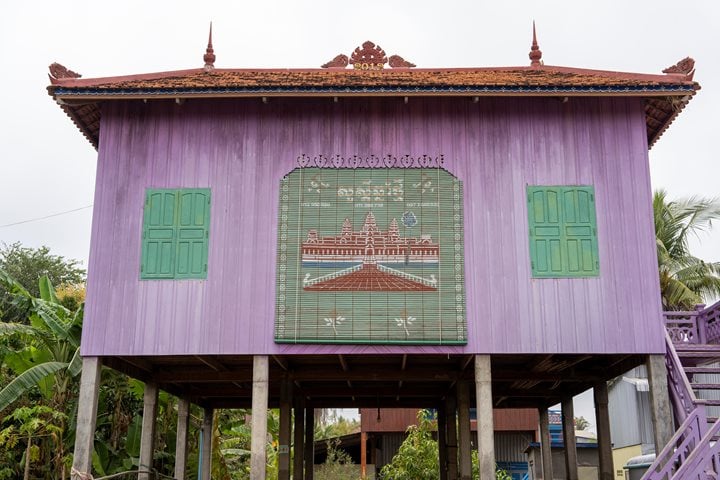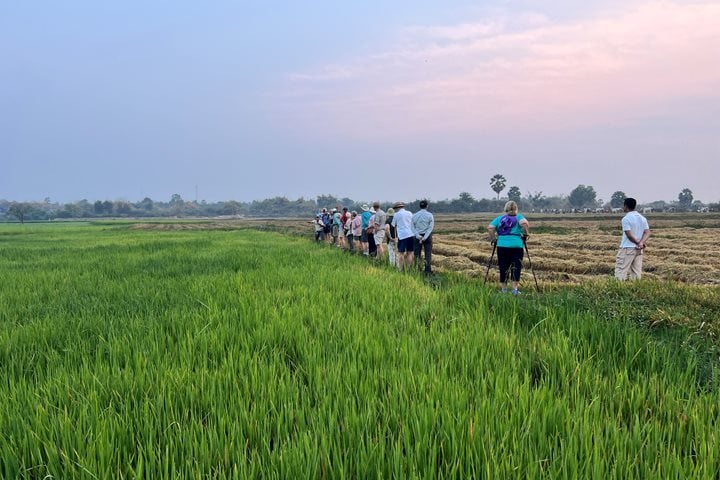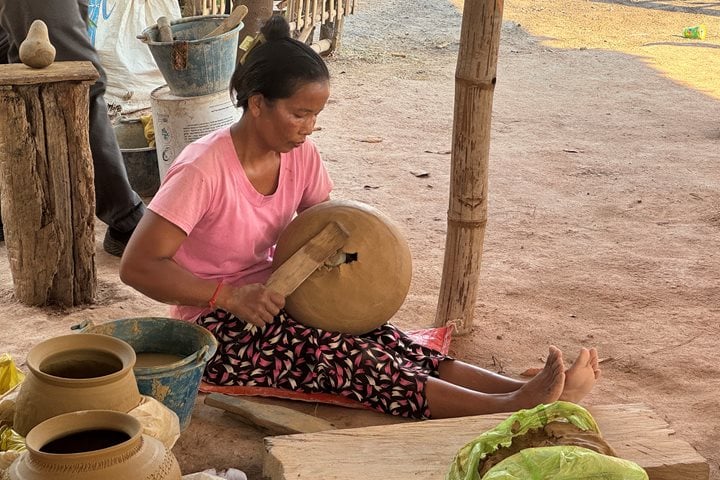Having tied ashore overnight we were greeted by a gorgeous pink sky as the sun rose over Kampong Tralach village. Located about 60km north of Phnom Penh, Kampong Tralach might as well be a world away, as it is untouched by tourism and life moves along at a more leisurely pace. Testament to this is our mode of transportation today, the ox cart, which is largely unchanged for over one thousand years. Bas-relief carvings at Angkor dating to the reign of Jayavarman VII show the design is virtually the same today as it was in the late 12th century AD. Whilst not the smoothest of rides, the ox carts meandering through the rice fields allow us to take in our surroundings as they drift by. At the end of our ride we arrive at the Green School, a Lindblad-supported social enterprise which provides free English language classes to the local children.
Back on the ship the morning program includes a class in traditional Khmer dress as we learn how to wrap a sampot and the versatility of the kroma. Afterwards, Mr. Voant takes us behind the scenes of Jahan where we see how the ship functions “back of house.” Cultural specialist David Brotherson then takes us through the symbolic rituals and vibrant attire of his own traditional Khmer wedding.
Our afternoon outing took us to Koh Oaknha Tey, a farming community on a small island in the Mekong. First we meet with the local head monk who tells us about monastic life.
Although the distant towers of Phnom Penh are visible on the horizon, Koh Oaknha Tey is still very rural as our convoy of tuktuks bumps along through the fields growing fruits and vegetables. The island also hosts a silk farm, with a small cottage industry of silk weaving. The intricately designed, hand-operated mechanical looms appear difficult to master, but the local artisans make it look easy. The beautiful fabrics and scarves they produce means that the gift shop does a roaring trade.







